Potrebujeme váš súhlas na využitie jednotlivých dát, aby sa vám okrem iného mohli ukazovať informácie týkajúce sa vašich záujmov. Súhlas udelíte kliknutím na tlačidlo „OK“.
ASTM D5034-09(2013)
Standard Test Method for Breaking Strength and Elongation of Textile Fabrics (Grab Test)
Automaticky preložený názov:
Štandardná skúšobná metóda pre Pevnosť a ťažnosť textílií (Grab test)
NORMA vydaná dňa 1.7.2013
Informácie o norme:
Označenie normy: ASTM D5034-09(2013)
Poznámka: NEPLATNÁ
Dátum vydania normy: 1.7.2013
Kód tovaru: NS-29585
Počet strán: 8
Približná hmotnosť: 24 g (0.05 libier)
Krajina: Americká technická norma
Kategória: Technické normy ASTM
Kategórie - podobné normy:
Anotácia textu normy ASTM D5034-09(2013) :
Keywords:
breaking-strength, elongation, fabric, nonwoven fabric, woven fabric, ICS Number Code 59.080.30 (Textile fabrics)
Doplňujúce informácie
| Significance and Use | ||||||||||||||||||
|
5.1 The grab test procedure in this test method for the determination of breaking force and elongation is considered satisfactory for acceptance testing of commercial shipments of most woven or nonwoven textile fabrics, and the modified grab test procedure is considered satisfactory for acceptance testing of commercial shipments of most woven textile fabrics, since the procedures have been used extensively in the trade for acceptance testing. 5.1.1 In case of disagreement arising from differences in reported test values when using this test method for acceptance testing of commercial shipments, the purchaser and the supplier should conduct comparative tests to determine if there is a statistical bias between their laboratories. Competent statistical assistance is recommended for the investigation of bias. As a minimum, the two parties should take a group of test specimens which are as homogeneous as possible and which are from a lot of material of the type in question. The test specimens should then be randomly assigned in equal numbers to each laboratory for testing. The average results from the two laboratories should be compared using Student's t-test for unpaired data and an acceptable probability level chosen by the two parties before testing is begun. If a bias is found, either its cause must be found and corrected, or the purchaser and the supplier must agree to interpret future test results in light of the known bias. 5.2 This test method is not recommended for knitted fabrics because of their high stretch. 5.3 Some modification of technique may be necessary for any fabric having a strength in excess of 200-N/cm (1140-lb/in.) width. Special precautionary measures are provided for use when necessary for strong fabrics. 5.4 All of the procedures are applicable for testing fabrics either conditioned or wet. 5.5 Comparison of results from tensile testing machines operating on different principles is not recommended. When different types of machines are used for comparison testing, constant-time-to-break at 20 ± 3 s is the established way of producing data. Even then the data may differ significantly. 5.6 Although a constant-rate-of-extension is preferred in these procedures, in cases of dispute, unless there is agreement to the contrary between the purchaser and the supplier, a constant-time-to-break (20 ± 3 s) is to be used. 5.7 The grab test procedure is applicable to the determination of the effective strength of the fabric; that is, the strength of the yarns in a specific width together with the fabric assistance from the adjacent yarns. The breaking force determined by the grab procedure is not a reflection of the strength of the yarns actually gripped between clamps and cannot be used for direct comparison with yarn strength determinations. Grab test specimens require much less time to prepare although they require more fabric per specimen. There is no simple relationship between grab tests and strip tests since the amount of fabric assistance depends on the type of fabric and construction variables. 5.8 The modified grab test procedure is applicable to the determination of the breaking force of fabrics with constructions in which the application of tensile stress on raveled strip specimens produces further unraveling. This test method is particularly applicable to high-strength fabrics. |
||||||||||||||||||
| 1. Scope | ||||||||||||||||||
|
1.1 This test method covers the grab and modified grab test procedures for determining the breaking strength and elongation of most textile fabrics. Provisions are made for wet testing. 1.1.1 The grab test procedure is applicable to woven, nonwoven, and felted fabrics, while the modified grab test procedure is used primarily for woven fabrics. 1.2 This test method is not recommended for glass fabrics, or for knitted fabrics and other textile fabrics which have high stretch (more than 11 %). 1.3 This test method provides the
values in both inch-pound units and SI units. Inch-pound units is
the technically correct name for the customary units used in the
United States. SI units is the technically correct name for the
system of metric units known as the International System of Units.
The values stated in either acceptable metric units or in other
units shall be regarded separately as standard. The values stated
in each system may not be exact equivalents; therefore, each system
must be used independently of the other, without combining in any
way.
1.4 This standard does not purport to address all of the safety concerns, if any, associated with its use. It is the responsibility of the user of this standard to establish appropriate safety and health practices and determine the applicability of regulatory limitations prior to use. |
||||||||||||||||||
| 2. Referenced Documents | ||||||||||||||||||
|
Podobné normy:
Historická
15.3.2013
Historická
1.7.2012
Historická
1.2.2014
Historická
1.12.2011
Historická
1.7.2013
Historická
1.7.2013
Odporúčame:
Aktualizácia technických noriem
Chcete mať istotu, že používate len platné technické normy?
Ponúkame Vám riešenie, ktoré Vám zaistí mesačný prehľad o aktuálnosti noriem, ktoré používate.
Chcete vedieť viac informácií ? Pozrite sa na túto stránku.


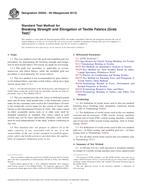
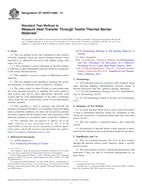 ASTM D7140/D7140M-13..
ASTM D7140/D7140M-13..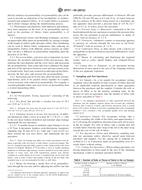 ASTM D737-04(2012)..
ASTM D737-04(2012)..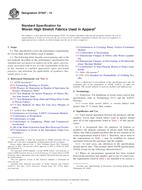 ASTM D7507-14
ASTM D7507-14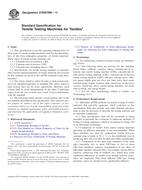 ASTM D76/D76M-11..
ASTM D76/D76M-11..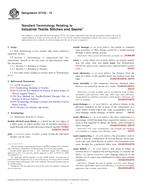 ASTM D7722-13
ASTM D7722-13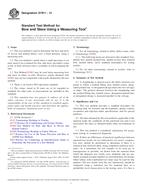 ASTM D7811-13
ASTM D7811-13
 Cookies
Cookies
